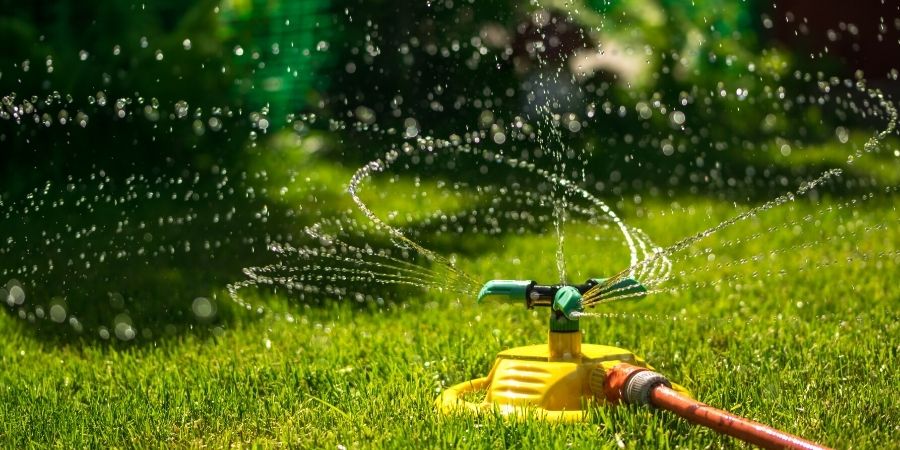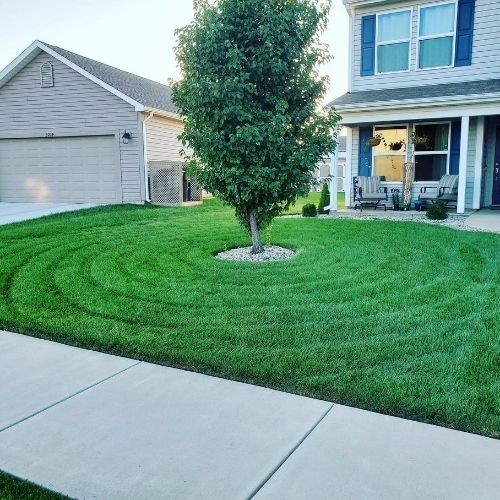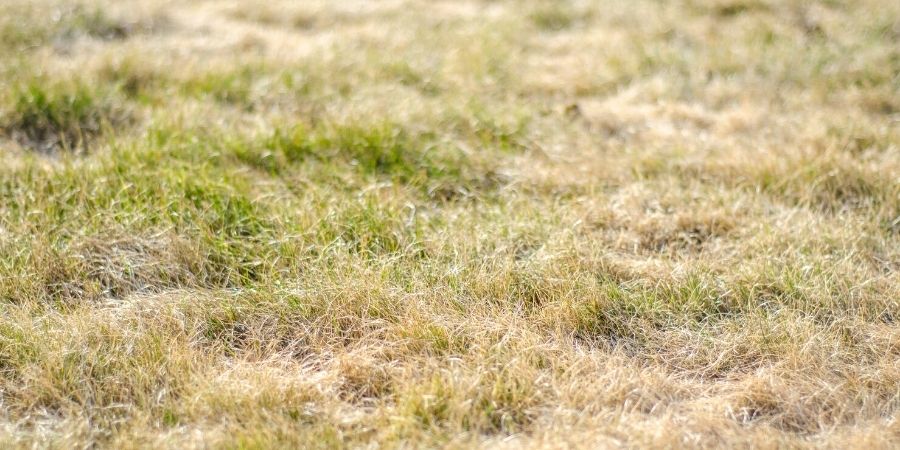How to Water Your Lawn
- Milorganite AgronomistJuly 25, 2020
After a day working in the yard and cutting the lawn, you’d probably regret not drinking enough water. You’d be wilting like the grass. Like people, grass needs to remain hydrated, especially during hot summer weather.
Watering seems like a fairly straightforward task for keeping your lawn healthy, but there are best practices. Here are a few simple guidelines for watering your lawn that every blade of grass will appreciate.
How do I know my lawn needs water?
You’ll know it’s time to water your lawn if it looks dull or grayish-green, or doesn’t bounce back like it normally does after you walk on it.

How much water does my lawn need?
A healthy lawn requires about 1” of water every week, whether it’s from the sky or a hose. How much to water your lawn depends on how much rain your area has had. If there’s been 1” or more of rain, there’s no need to water. If there’s been less than 1” of rain, water your lawn once or twice that week so that the total amount of water your lawn receives is 1”.
Water your lawn deeply and infrequently. Watering deeply promotes deeper root growth for a stronger, more disease-tolerant, drought-resistant lawn. Frequent, light sprinkles with a hose promotes a shallow root system and weakens the grass.
Ideally, water should penetrate the soil 4” to 6” for optimal root growth. To test the depth of watering, you can use a screwdriver that’s at least 6” long. Push it into the soil until there’s resistance. This will give you an idea of how far down the water has reached.
How do I measure rainfall and irrigation amounts?
There are a few ways to measure how much water your lawn has received. You can use a rain gauge. If you don’t have a rain gauge, you can use empty tuna or cat food cans. Mark the inside of the can at ½” and 1”. Place a few cans around the yard to identify areas that may be getting more or less water, either from rainfall or irrigation. Pooling water indicates a drainage problem. You can also search online to find how much rain you’ve had in your area, but it’s not specific to your yard.
When you’re watering the lawn, time how long it takes to reach ½” or 1” of water. You can use this as a gauge for how long you need to water next time to reach that same amount.

Cody W. - Lafayette, IN
What is the best time of day to water my lawn?
The best time of day to water your lawn is early morning, between 4 a.m. and 10 a.m., when temperatures are typically the coolest of the day and winds tend to be calm. This allows time for the lawn to dry out during the day. If the grass remains wet for too long, it’s an invitation for a number of grass diseases. There’s less evaporation when you water early in the day, which conserves water. Don’t waste water by irrigating your walk, drive or the street.
If you must water in the evening, water between 4 p.m. and 6 p.m., but I really don’t recommend it.
Familiarize yourself with state, region and community watering restrictions and schedules.

If it’s a hot, dry summer, should I water my lawn or let it go dormant?
Watering your lawn in summer is, in part, a matter of personal preference.
If you’re experiencing dry or drought conditions during the summer, you may decide to allow your lawn to go dormant, which is what I prefer. Dormant lawns can survive temperatures in the 80s for 3–4 weeks and in the 90s for 2–3 weeks before watering is needed.
To help your lawn get through dormancy, water it about ½ inch every 3 weeks. Your lawn won’t turn green. It helps to keep the lawn alive. The lawn should start greening up again when the weather cools down and there’s consistent rain.
If drought conditions are typical in your area, consider grass varieties for your lawn that are more drought tolerant.
Healthy lawns are more drought tolerant and better able to retain water. Fertilize regularly using a slow-release nitrogen fertilizer, such as Milorganite. It will encourage steady growth above and below the ground. It doesn’t need to be watered-in, because it’s non-burning. The nutrients in Milorganite will be available to the grass when enough moisture is present.
If you choose to maintain a green lawn during dry/drought conditions, the rule remains the same: 1” of water in 1–2 applications per week.

